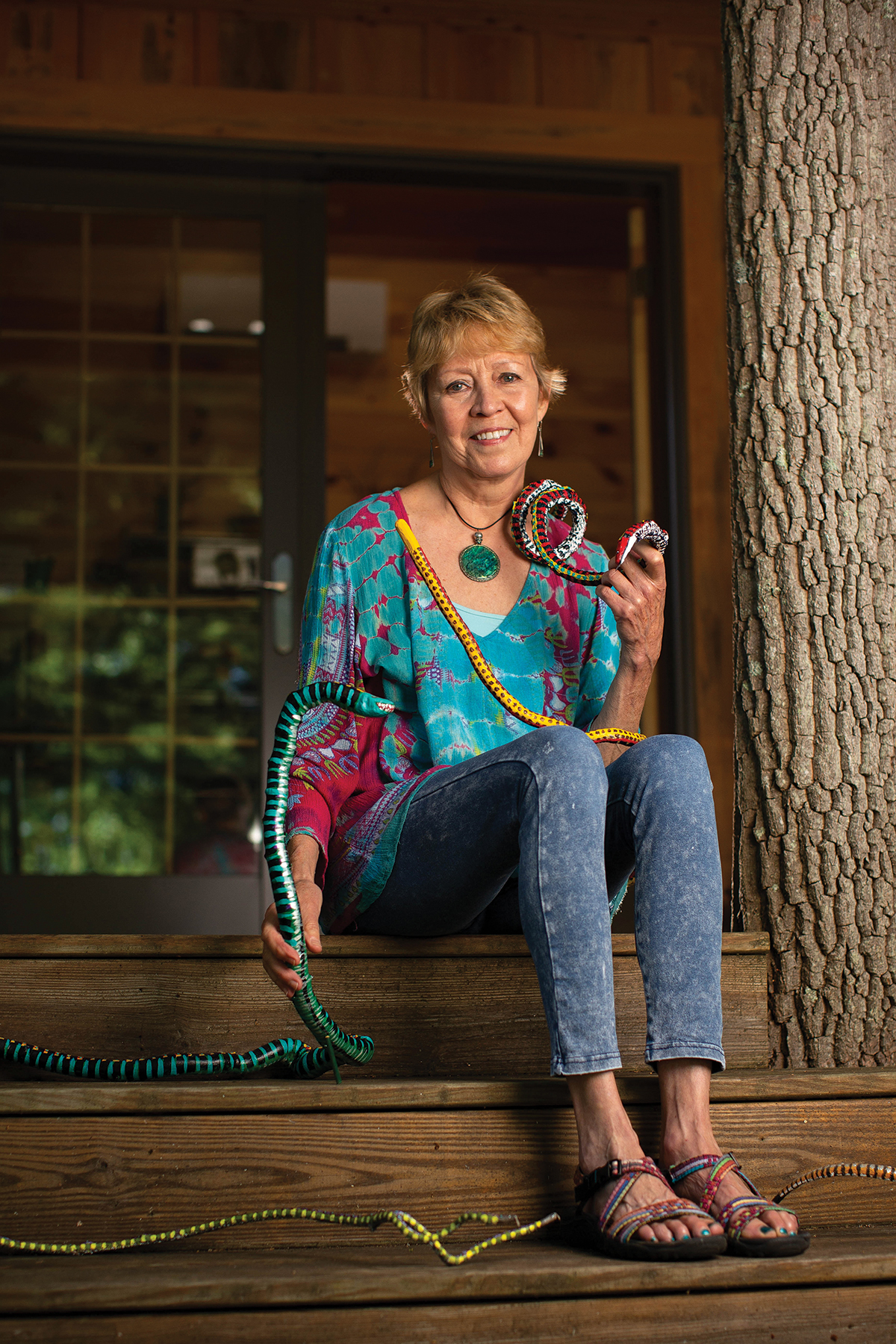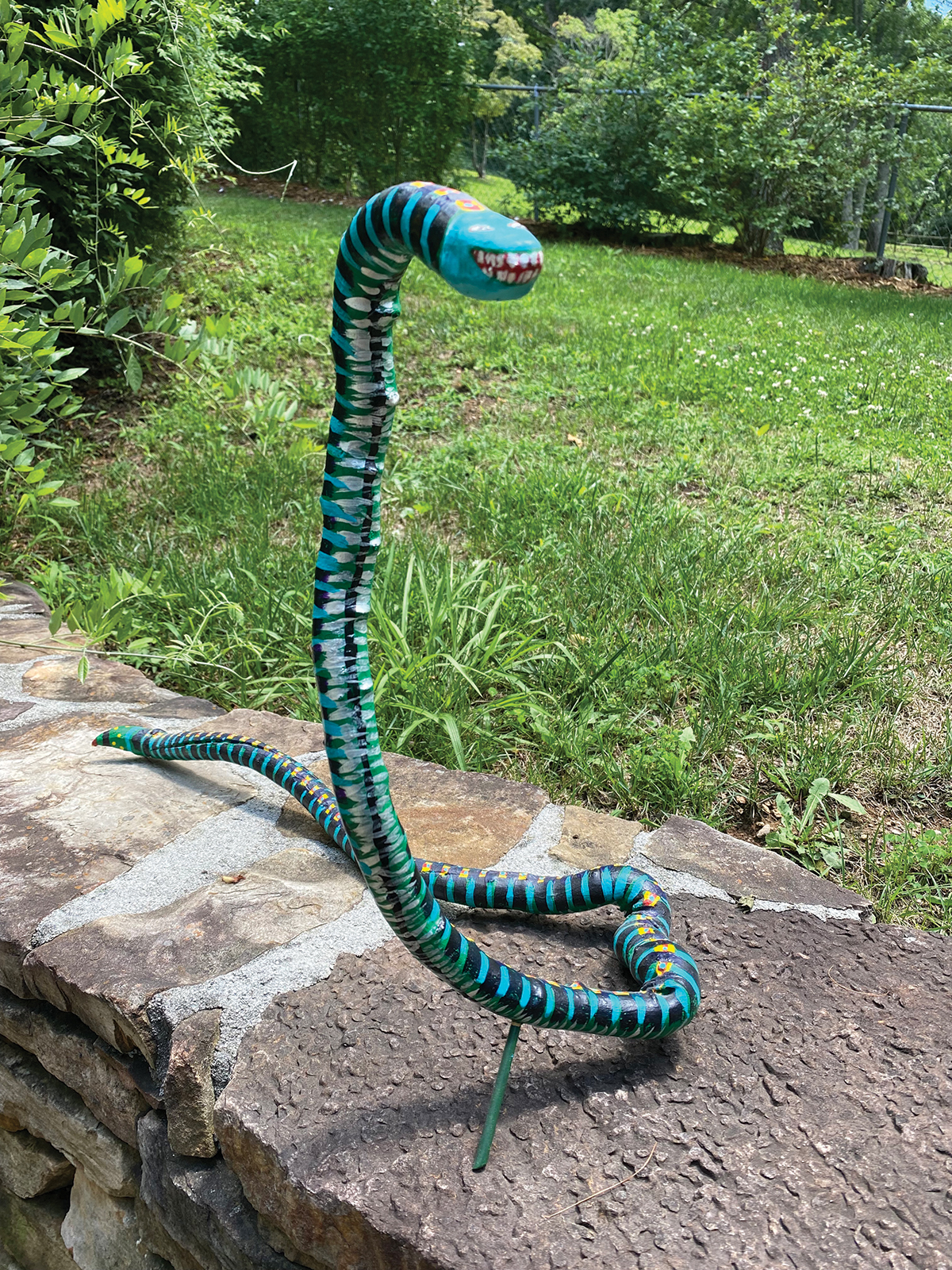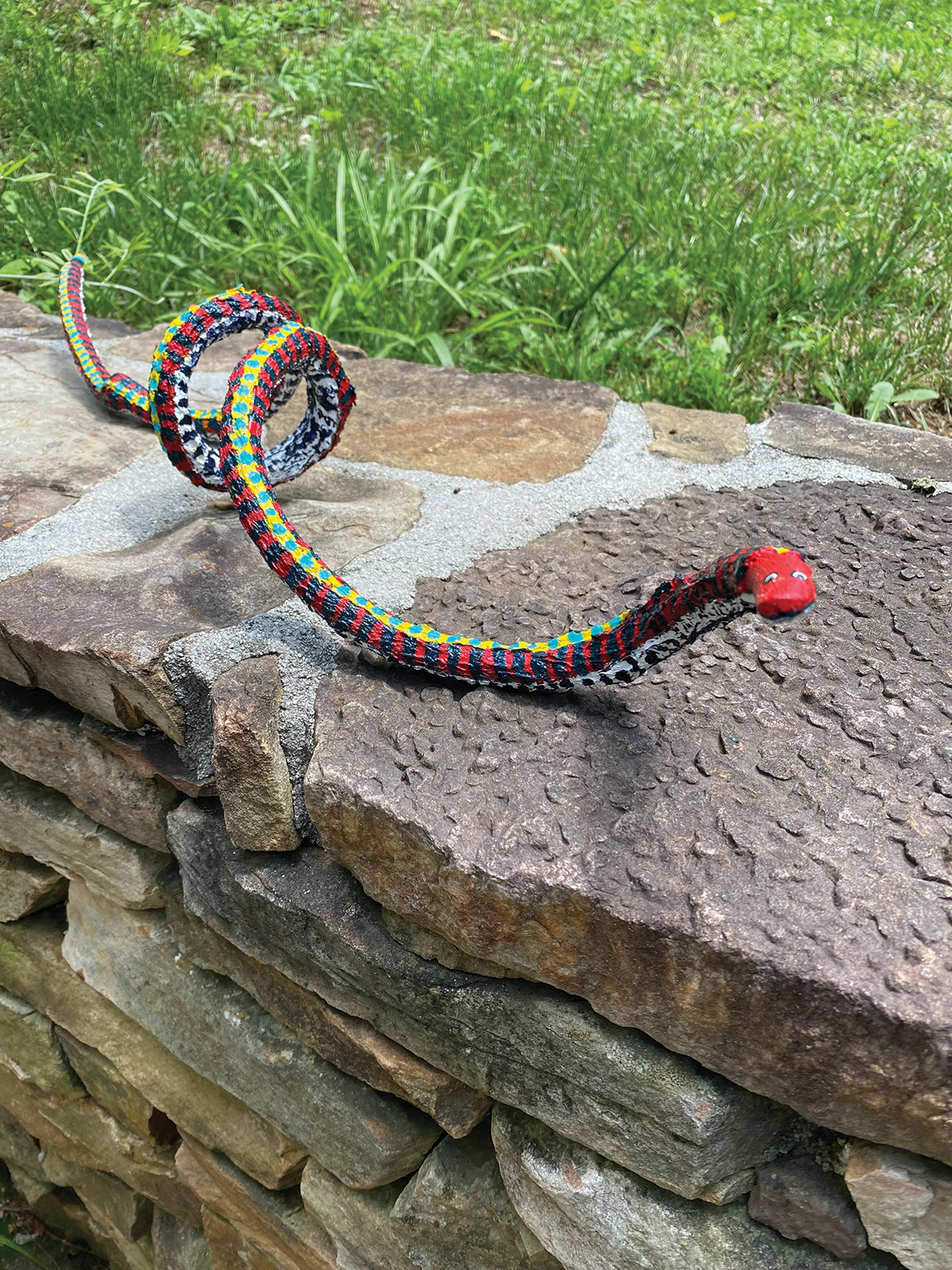
Portrait by Colby Rabon
Although Susan Query has been creating art her whole life, she studied psychology as an undergrad, holds a PhD in health education, and focused her career on education and counseling. Then, when she settled in Asheville in 2013, she combined health psychology and art to overcome a phobia. “When I lived in Charlotte a snake got into my kitchen, and I was terrified.
“Then I moved to Asheville, on six acres — with lots of snakes. My partner, a professional forester, named it Snake Farm.” He also decided to give her a piece of art that looked like a snake.

“At first, I could hardly hold it because it was so creepy. But it was therapy for me, and I said to myself, ‘I think I can make those.’”
For her own snake sticks, she uses curvy vines with soft wood, like cross vine, honeysuckle, and her favorite for snake-stick making — Oriental bittersweet, which has scaly bark. Query carves a head and tail and paints them, and she says the one-of-a-kind creatures are nonvenomous. “One reason snakes are scary,” Query notes, “is that they’re hard to spot unless you come right up on them, so I make mine very colorful. They’re fun to put on the mantel or hang on a wall, and I make some ceramic ones, too.”

Some of Query’s snakes have body parts made from chair-caning material.
All of her snake sticks — which she doesn’t attempt to render with realism — have a whimsical twist. “They’re modeled from my imagination,” she explains, “and I may refer to a book for colors especially their underbellies, which can be very interesting. Some have spots, some are yellow, some are black. Sometimes I carve teeth, too, or make a forked tongue out of caning material that’s used for caning chairs.”

Not only are these delightful objets d’art fun to look at, but they also helped Query overcome her phobia. “I saw a big, five-foot-long black rat snake on our backyard fence, and in the past I’d have to stay inside the house. Now I am able to stand at a comfortable distance and have a good look. I’ve found that the ones we have around here are really shy.”

But for Query, snake sticks are merely a sideline. Her current focus is on hand-built whimsical stoneware that incorporates natural design and color elements. “I often roll blocks of bittersweet into the clay for texture and design, and because texture accepts glaze in a more interesting way. Burdock has neat veins in the leaves, and I’ll roll them into clay for making platters, bowls, or wall art.”

Meanwhile, for her abstract acrylic paintings on canvas, Query uses free-flowing techniques like pouring, swirling, and dripping. As it turns out, these other artistic mediums each contribute their own kind of therapy. “When making pottery, I have a plan, but it may turn out quite different. That’s a good departure for someone who’s a Type A perfectionist — and the flow painting has been good for learning to go with the flow.”
Susan Query, North Asheville. Query’s studio is open by appointment and during the 5th Annual Beaverdam Studio Tour, happening Saturday, Oct. 29 (10am-5pm) and Sunday, Oct. 30 (10am-4pm). For more information, including a map, see beaverdamstudiotour.com. (Also see susanquery.com).